
- Permbajtja
- prev
- next
- prev
- next
Inside the Houses of House of Gucci
It may be based on a true story, but House of Gucci is not a documentary. Director Ridley Scott uses plenty of artistic license to tell the tragedy of the family who once helmed the luxury fashion brand, turning Maurizio Gucci (played by Adam Driver), Patrizia Reggiani (Lady Gaga), Paolo Gucci (Jared Leto), and the rest of the players into larger-than-life characters with a healthy dose of camp. (Since the film’s premiere, the real-life Gucci family released a lengthy statement taking issue with their portrayal.)
So, when it comes to the luxe interiors where the machinations take place, how accurate is what fans see on-screen? “Nowadays everyone takes a selfie and everyone is available. But, in the past, private life, especially in Italy, was more private”. With few pictures of the Gucci family’s real homes available, she, production designer Arthur Max, and their team set out to “deliver a message” through the sets instead of a perfect recreation.
“We want to make a movie where every character is in a house that reflects the personality of the character”. However, given the fact that they are all members of the same family and the same wealthy Milan society, there were certainly some through lines, one of them being gorgeous Italian antiques. Santucci sourced items from Robertaebasta, Gallery Ltwid, Michel Leo Milano, Rubelli, Lalique, Daum, and more to fill sets created at the iconic Cinecitta studios in Rome. These spaces were married with shots on location at a number of historic villas to create the houses of Gucci.
Villa Necchi Campiglio
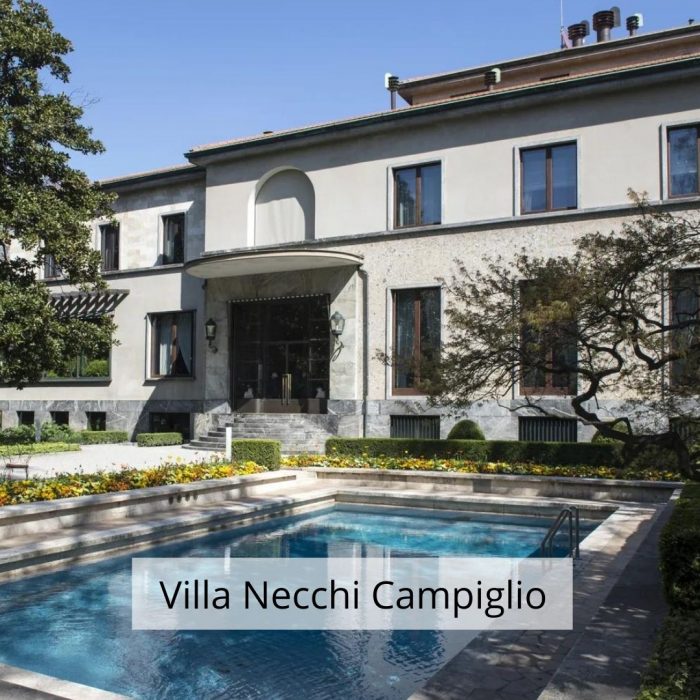
Villa Necchi Campiglio in Milan became Rodolfo Gucci’s (played by Jeremy Irons) dark living time capsule where he reminisces on his days as an actor and broods about his son Maurizio’s marriage to Patrizia. Built in 1935 by architect Piero Portaluppi and later updated by Tomaso Buzzi, the property is reportedly home to Milan’s first private swimming pool and operates as a museum today. Cinephiles will recognize it as the house from the 2009 Tilda Swinton film I Am Love. Villa Necchi is considered a work of Rationalist architecture, though Buzzi’s updates have more ornamental features.
Villa Balbiano
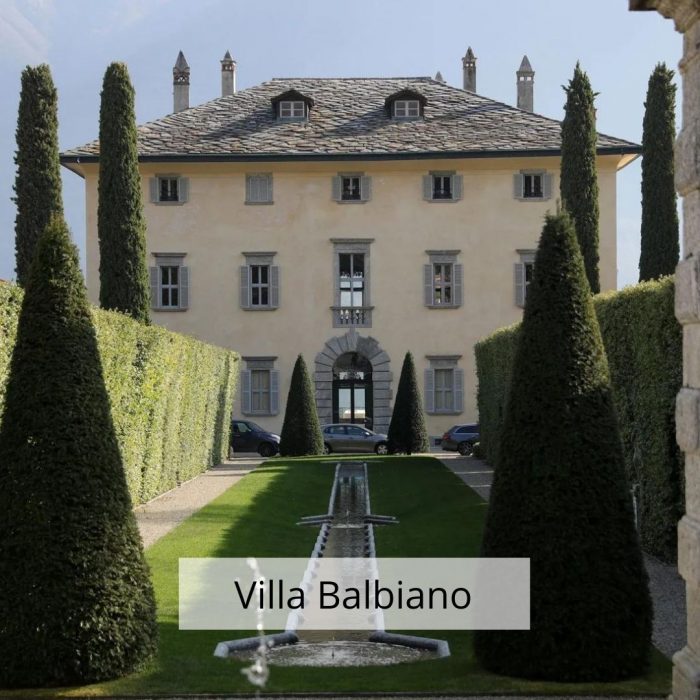
By contrast, Aldo Gucci’s (Al Pacino) Lake Como home in the film is an opulent late-16th-century mansion called Villa Balbiano featuring frescoes on the walls and landscaping distinguished by the British Society of Garden Designers. Recently, it was restored by AD100 designer Jacques Garcia.
Villa Polissena
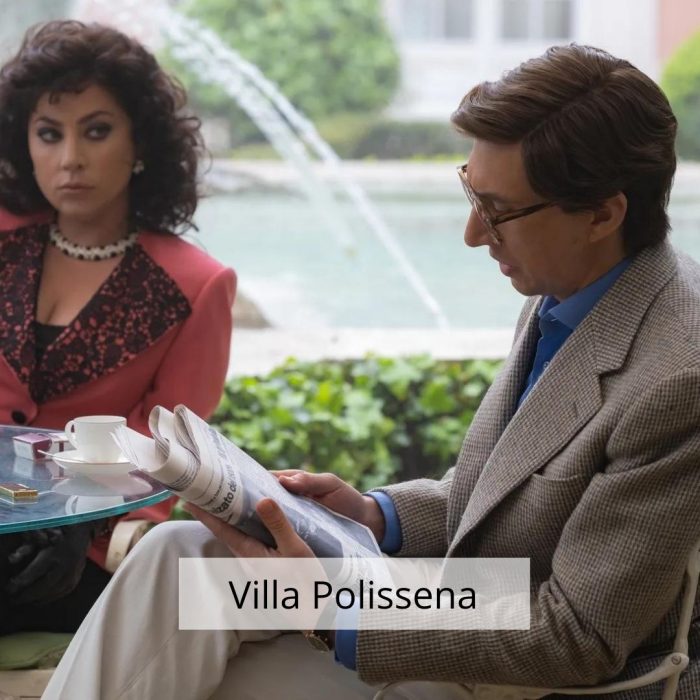
This elegant orange villa which is the Italian home of fashion royalty (Patrizia and Maurizio) in the film is home to actual royalty in real life. The Princess Mafalda von Hessen, a descendent of both German and Italian aristocracy and a fashion designer calls this place home. The gardens, where Patrizia and Maurizio have a tense conversation, were reportedly designed by her grandfather Landgraf Philipp von Hessen.
Maurizio and Patrizia Gucci’s New York City apartment
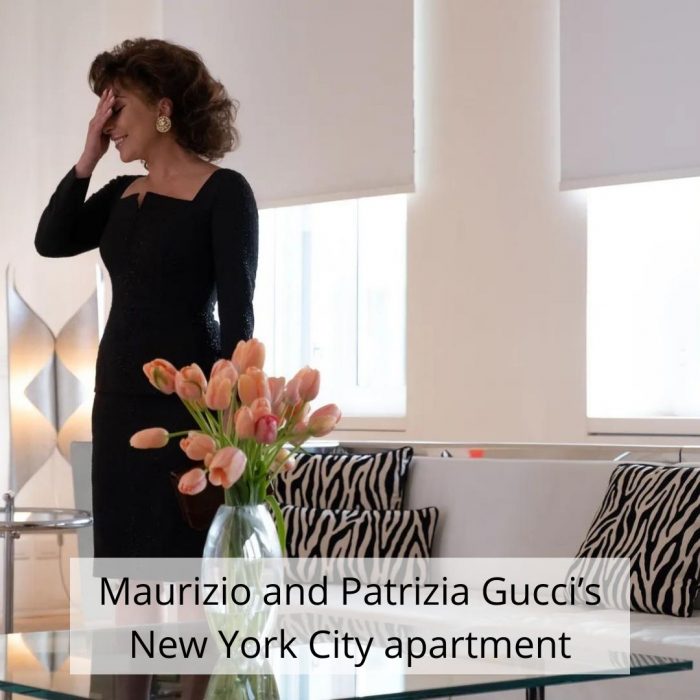
This studio build “was our Pop art set,” Santucci says. It was the epitome of late ’80s, early ’90s style, with plenty of white and chrome, lamps sourced from Fontana Arte and reproductions of paintings by Robert Motherwell, Mark Rothko, Roy Lichtenstein, and Robert Rauschenberg.
The Gucci family chalet
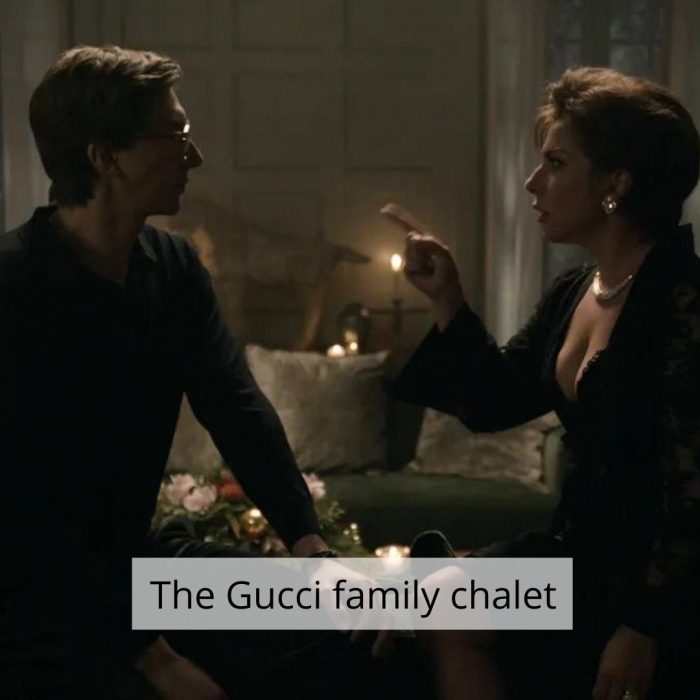
Max called this set “right out of Architectural Digest,” and it shows. The exterior of the Swiss ski chalet was filmed in the Italian town of Gressoney-Saint-Jean, while the interiors were created entirely in the studio with an abundance of antiques from northern Italy. “We want to be a little bit posh,” Santucci says. Light woods and fur are featured heavily. “I found a couple of very nice wooden horses, because the wooden horses are typical for a decoration of these kind of houses in the north, in that time.”
Source: Architectural Digest